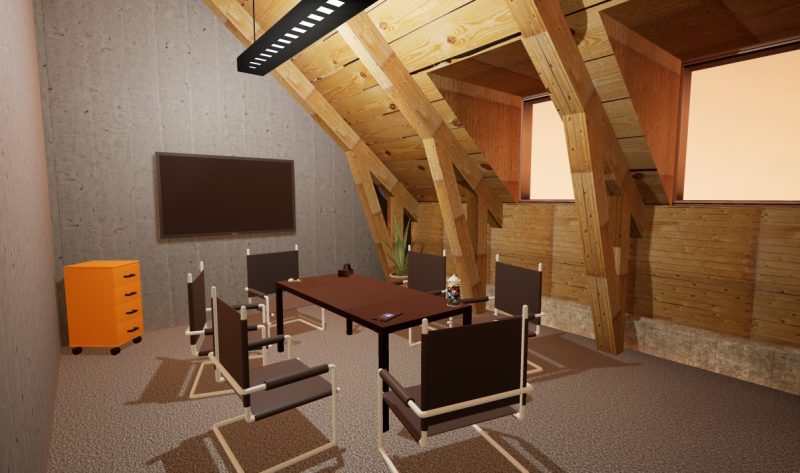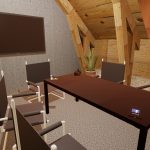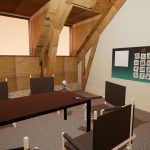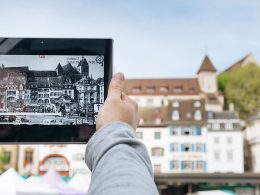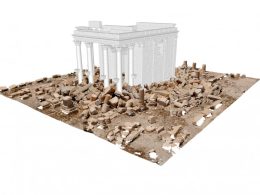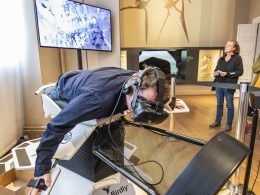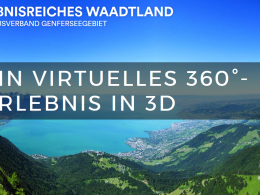A new video from nexum's Enhanced Interaction Lab demonstrates the diverse uses of virtual reality technology in the business sector. The digital agency has virtually modelled a meeting room at its Swiss headquarters in Bern and equipped it with various interaction options.
Social virtual reality is definitely on the rise; also in the business sector. In a video, the company nexum shows how the user moves in virtual space in their latest application and interacts with it in different ways. The virtual meeting room contains an exhibition with various customer works as well as experiments that nexum's Interaction Lab has developed in recent months and partly also made accessible to the public.
Virtual - but still tangible
As in the real meeting room, there is also a TV screen for presentations in the digital image. If the screen is touched with the virtual hand, a presentation video on past nexum customer work appears. The video also shows how the user can get to know nexum's Swiss team on an interactive poster, or how lifting or touching various virtual objects can call up the corresponding information or animations in other rooms.
According to Nicola Schlup, Managing Director of nexum Switzerland, the team's goal was to apply the VR technology using a practical example, to try out different UX patterns of their own, to integrate already established interaction patterns for virtual reality into the experiment and to provide a technological way of playing around the topic of virtual reality. The VR prototype was developed on the basis of the HTC Vive system using the "Unreal" VR development environment.
Multiple forms of application in hyperreality
According to Schlup, the prototype shown represents the beginning of a series of different developments around remote working and collaboration in teams using VR technology. "If you spend a while in our virtual meeting room, you will realise how quickly the boundaries between reality and simulation become blurred. If the real meeting room is occupied, employees can simply switch to the virtual version or collaborate across locations," Schlup tells us.
However, the Bern team is not only interested in copying reality one-to-one, but also in adding additional features to the virtual meeting room. "Our conceptual designers prefer to work on free spaces that they can use in workshops. In the real meeting room, depending on the workshop situation, we would have to go to great lengths to get whiteboards - in virtual reality, all it takes is a few clicks. We also like to talk about so-called 'hyperreality', i.e. a virtual reality that is superior to the real one in terms of content and functions," Schlup continues.
Source: Media release





